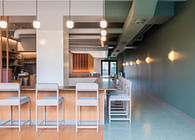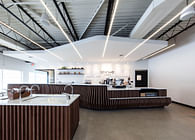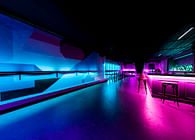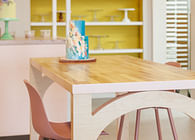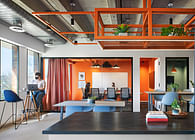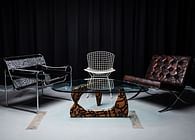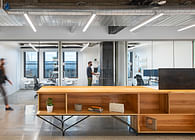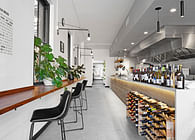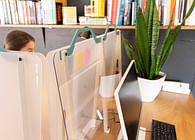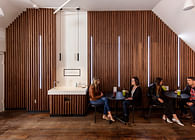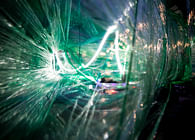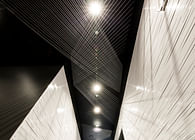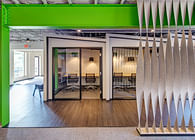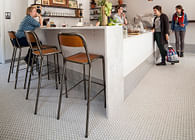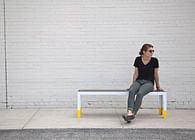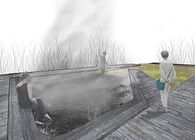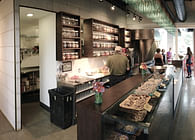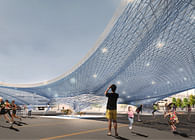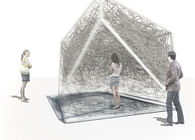
Bamboo Detroit’s second location that offers coworking space, private offices, and event spaces. The project was an adaptive reuse of a historic retail and furniture store into a new community hub of innovation and collaboration. The original atrium stair did not meet current building codes, enabling the design to reconfigure the common area into an auditorium stair stacked above a presentation platform. In section, two events can happen simultaneously atop one another of dramatically different topics - reinforcing the flexibility and convergence of ideas.
The design team custom fabricated a pair of tyvek installations to define dedicated coworking and illuminate the central circulation. The skeleton frames and tyvek were digitally fabricated from a 3D model with a CNC knife cutter for accurate component production. All panels were created in the shop and installed on site during furniture installation. At a smaller scale, the design team also designed a custom workwall partition to create safe separation between workstations that doubles as a moveable dry erase board for notetaking and brainstorming.
Indirect lighting arrayed throughout the basement illuminates a previously dim space and the Tyvek light installation in the stairwell mimics a skylight for additional illumination. The previously underutilized sidewalk vault is converted into meeting rooms to increase the usable square footage.
The design process began with a series of space planning rules and a design decision guide. These parameters became the translation of customer experience from the business model to the built environment.
Space Planning Rules
No Dead Ends - Dead ends create exclusionary zones, limiting convergence of members, that only those whose destination at the end will use the path.
Take a Break - Create pockets that are not reservable near workstations, enabling everyone to have flexibility with their work-flow without traversing the entire building.
Connections - Create common spaces adjacent to primary circulation reduces distraction to workspaces.
Democratize - Each floor is a neighborhood of mixed uses. Growing up doesn’t mean you need to move. A variety of spaces are available on the floor to also integrate mentors, ambition, and diversity in businesses.
Design Decision Guide
Fresh and Flexible - Bamboo’s brand identity should not be visually reinforced to the point that all the amazing company member brands are diluted.
Down to Earth - As a space for start-ups, the space should meet companies where they’re at. The material palette should utilize common materials in innovative ways. Magic happens in the innovation applied to a simple start.
Generous - Furniture and spaces should feel generous through either: size or options. Large work surface, without overpacking. Providing multiple lighting levels or seating options to ergonomically create a fit or experience for a variety of bodies.
Tones in Details - The Bamboo brand tones should come through in the small details such as artwork, plants, and fixtures.
Status: Built
Location: Royal Oak, MI, US
Firm Role: Architect
Additional Credits: Photos: John D'Angelo
General Contractor: Bloom Construction
MEP: GreenPath Design & ETS Engineering
